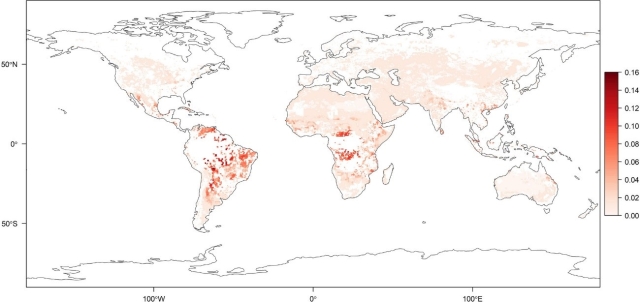論文情報
著者:Wenchao Wu, Tomoko Hasegawa, Haruka Ohashi, Naota Hanasaki, Jingyu Liu, Tetsuya Matsui, Shinichiro Fujimori, Toshihiko Masui, Kiyoshi Takahashi
発表年:2019
掲載雑誌:Global Change Biology Bioenergy, 11(9), 1041-1055
論文へのリンク(英文のみ)
キーワード
biodiversity protection, bioenergy potential, demand- and supply-side policy, integrated assessment, societal transformation, soil protection
概要
Bioenergy plays an important role in low greenhouse gas stabilization scenarios. Among various possible sources of bioenergy, dedicated bio‐crops could contribute to most of the potential. However, large scale bio‐crop deployment raises sustainability concerns. Policies to alleviate the pressure of bio‐crops on the terrestrial environment can affect bioenergy potential and production costs. Here, we estimated the maximum bioenergy potential under environmental protection policies (biodiversity and soil protection) and societal transformation measures from demand and supply side (demand‐side policy includes sustainable diet; supply‐side policy includes advanced technology and trade openness for food) by using an integrated assessment modelling framework, which consists of a general equilibrium model (Asian‐Pacific Integrated Model/Computable General Equilibrium) and a spatial land use allocation model (Asian‐Pacific Integrated Model/Platform for Land‐Use and Environmental Model). We found that the global advanced bioenergy potential under no policy was 245 EJ/year and that 192 EJ/year could be produced under US$5/GJ. These figures were 149 EJ/year and 110 EJ/year, respectively, under a full environmental policy. Biodiversity protection has a greater impact than soil protection due to its larger coverage and stronger implementation. Societal transformation measures effectively increase them to 186 EJ/year and 143 EJ/year, respectively, even under full environmental policies. These results imply that the large‐scale bioenergy deployment possibly needed for the climate target to limit the global mean temperature increase well below 2°C compared to the preindustrial level might face a trade‐off with environmental protection targets and that possible mitigation pathways in harmony with other environmental issues need to be explored.






